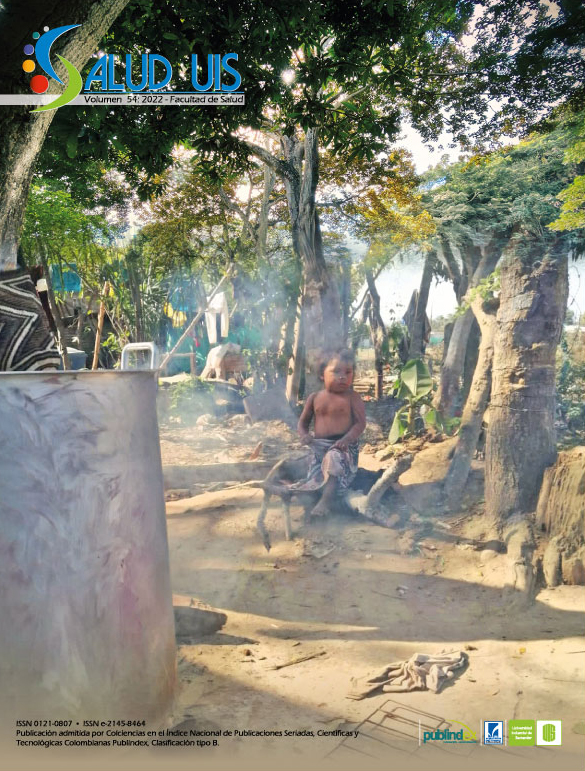Abstract
Introduction: More than a year after the beginning of the COVID-19 pandemic, the number of infections and deaths is still beyond the control of hospital management. In addition to fear, myths, beliefs, self-medication and inadequate risk perception in the population have increased. Objective: To identify the perception of risk, self-medication, myths and prevention beliefs regarding COVID-19 in adult heads of household in the Gregorio Albarracín district of Tacna in 2020. Method: A survey was administered to a representative sample of 250 heads of household, residing in the Gregorio Albarracín district. Results: The total average of the group in risk perception expressed as a percentage was 60.96% (59.81-62.11) out of a total expected ideal of 100%. The perception of "being at risk in the pandemic" is low. Only 15.20% adhered to strict home isolation when instructed to do so. The 14.8% self-medicated and in this group, the products used were ivermectin (48.6%) and chlorine dioxide (45.9%). The most frequent myths and beliefs were "spraying with alcohol or chlorine kills the virus" "home remedies can cure or prevent coronavirus" and there was difference according to age (p<0.05), educational level (p<0.001). Conclusions: Self-medication was strongly associated with high-risk perception (p<0.001) and presence of myths and beliefs (p<0.001). Educational level was highly associated with the presence of myths and beliefs (p<0.001).
References
Sahoo S, Padhy SK, Ipsita J, Mehra A, Grover S. Demystifying the myths about COVID-19 infection and its societal importance. Asian J Psychiatry. 2020; 54: 102244. doi: https://doi.org/10.1016/j.ajp.2020.102244
Yupari-Azabache I, Bardales-Aguirre L, Rodríguez-Azabache J, Barros-Sevillano J. S, Rodríguez-Díaz Á. Factores de riesgo de mortalidad por COVID-19 en pacientes hospitalizados: Un modelo de regresión logística. Rev. Fac. Med. Hum. 2021; 21(1): 19-27. doi: http://dx.doi.org/10.25176/rfmh.v21i1.3264
Heymann DL, Shindo N. COVID-19: what is next for public health? The Lancet. 2020; 395(10224): 542-545. doi: https://doi.org/10.1016/S0140-6736(20)30374-3
Ni MY, Yang L, Leung CMC, Li N, Yao XI, Wang Y, et al. Mental health, risk factors, and social media use during the COVID-19 epidemic and cordon sanitaire among the community and health professionals in Wuhan, China: Cross-sectional survey. JMIR Ment Health. 2020; 7(5). doi: 10.2196/19009
Salaverría R, Buslón N, López-Pan F, León B, López-Goñi I, Erviti M-C. Desinformación en tiempos de pandemia: tipología de los bulos sobre la Covid-19. El Prof Inf EPI. 2020; 29(3). https://doi.org/10.3145/EPI
Organización Mundial de la Salud. Nuevo coronavirus 2019; [ https://www.who.int/es/emergencies/diseases/novel-coronavirus-2019
Merchant RM, Lurie N. Social media and emergency preparedness in response to novel Coronavirus. JAMA. 2020; 323(20): 2011-2012. doi: 10.1001 / jama.2020.4469.
World Health Organization. Panel de Control de coronavirus (COVID-19) de la OMS. Situación global. 2021; https://covid19.who.int
Pérez-Fuentes M del C, Molero Jurado M del M, Oropesa Ruiz NF, Martos Martínez Á, Simón Márquez M del M, Herrera-Peco I, et al. Questionnaire on perception of threat from COVID-19. J Clin Med. 2020; 9(4): 1196. doi: https://doi.org/10.3390/jcm9041196
Garbe L, Rau R, Toppe T. Influence of perceived threat of Covid-19 and HEXACO personality traits on toilet paper stockpiling. PLOS ONE. 2020; 15(6): e0234232. doi: https://doi.org/10.1371/journal.pone.0234232
Sánchez-Tarragó N. Desinformación en tiempos de COVID-19: ¿Qué podemos hacer para enfrentarla? Rev Cuba Inf En Ciencias de la Salud. [citado 09 de mayo del 2021]; 31 (2). 13 de mayo del 2020. Disponible en: http://www.rcics.sld.cu/index.php/acimed/article/view/1584
Ruiz ME. Risks of self-medication practices. Curr Drug Saf. octubre de 2010;5(4):315-23. doi: 10.2174 / 157488610792245966.
Guerra Ramírez De Colunche LA, Garfias Mallqui I. Estudio del expendio de los antibióticos sin receta médica en boticas y farmacias en el distrito de los olivos-lima, enero-junio 2019. Univ María Aux - UMA. 16 de diciembre de 2019; Disponible en: http://repositorio.uma.edu.pe/handle/UMA/221?show=full
Guerra LA, Garfias I. Estudio del expendio de los antibióticos sin receta médica en boticas y farmacias en el distrito de los Olivos-Lima Enero a junio 2019 [Internet]. [Lima]; Univ. María Auxiliadora, 2019. Disponible en: http://repositorio.uma.edu.pe/bitstream/handle/UMA/221/TESIS.pdf?sequence=3&isAllowed=y
Wolf LJ, Haddock G, Manstead ASR, Maio GR. The importance of (shared) human values for containing the COVID-19 pandemic. Br J Soc Psychol [Internet]. [citado 9 de mayo de 2021]; vol 59 (3). Jul 2020 Disponible en: https://onlinelibrary.wiley.com/doi/abs/10.1111/bjso.12401
Lajús Barrabeitg, G. Análisis de algunos comportamientos nocivos de la población cubana frente a la COVID-19 [Internet]. Revista Habanera de Ciencias Médicas; Vol. 19 (6) 2021 ene [citado 9 de junio de 2021]. Disponible en: http://www.revhabanera.sld.cu/index.php/rhab/article/view/3709/2755
Loewenstein GF, Welch N. Risk as feelings. Psychol Bull. 2001;127(2):267-86. doi: 10.1037 / 0033-2909.127.2.267.
Boston 677 Huntington Avenue, Ma 02115 +1495‑1000. Myths vs Facts [Internet]. India Research Center. 2020
Zhang N, Fielding R, Soong I, Chan KKK, Lee C, Ng A, et al. Psychometric assessment of the Chinese version of the brief illness perception questionnaire in breast cancer survivors. PLOS ONE [Internet]. 20 de marzo de 2017 [citado 08 de mayo del 2021]; 12 (3): e0174093. Disponible en: https://journals.plos.org/plosone/article?id=10.1371/journal.pone.0174093
Pacheco-Huergo V, Viladrich C, Pujol-Ribera E, Cabezas-Peña C, Núñez M, Roura-Olmeda P, et al. Perception in chronic illnesses: linguistic validation of the revised Illness Perception Questionnaire and the Brief Illness Perception Questionnaire for a Spanish population. Aten Primaria. mayo de 2012; 44(5): 280-287. doi: 10.1016/j.aprim.2010.11.022
Organización Mundial de la Salud. Consejos para la población acerca de los rumores sobre el nuevo coronavirus (2019-nCoV). 2020; https://www.who.int/es/emergencies/diseases/novel-coronavirus-2019/advice-for-public/myth-busters
Lake MA. What we know so far: COVID-19 current clinical knowledge and research. Clin Med Lond Engl. 2020; 20(2): 124-127. doi: 10.7861 / clinmed.2019-coron

This work is licensed under a Creative Commons Attribution 4.0 International License.
Copyright (c) 2022 Luis Carlos Cano Gómez, Rene Domingo Castillo-Tejada, Sissy Soledad Mena Ordoñez
